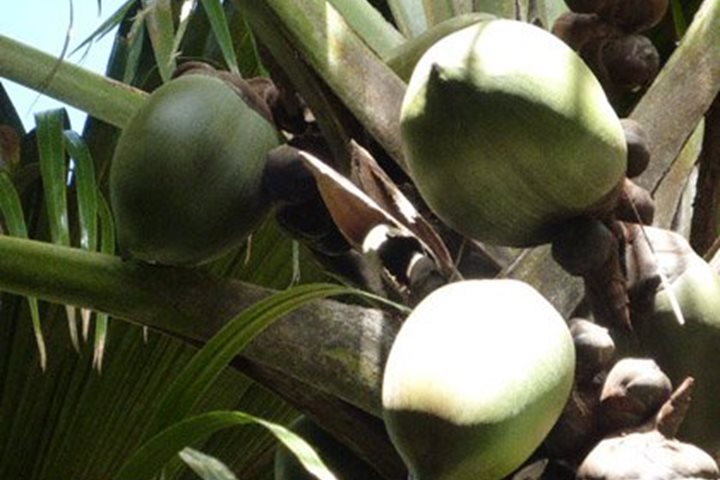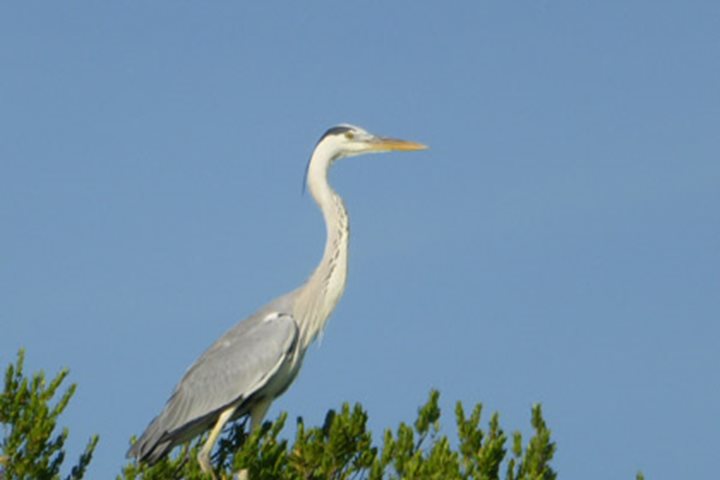Aride is the most northerly of the Seychelles granitic islands group. It is 68 hectares (about 170 acres) in area and is managed by the Island Conservation Society of Seychelles. Aride is one of the most important sea bird breeding sites in the entire Indian Ocean. It contains the world’s largest colonies of both lesser noddies and tropical shearwaters (formerly a subspecies of Audubon’s shearwater), and holds the largest Seychelles population of roseate terns (a species in serious decline). The rare red-tailed tropicbirds of the Seychelles breed only here on Aride, the northern-most outpost for this species. In addition, there are at least 10,000 pairs of ground-nesting white-tailed tropicbirds that can be found scattered about the island. Great and lesser frigatebirds are frequently encountered on Aride as non-breeding animals. Over 1.25 million seabirds regularly breed on Aride. The Seychelles warbler was introduced from Cousin Island to Aride in 1988 and its population is now the largest in the world, with over 2,000 pairs. The Seychelles fody was also introduced from Cousin in 2002. Perhaps the most interesting species is the Seychelles magpie robin, a beautiful and friendly little songbird that almost went extinct a few decades ago. From a population of just 12 individuals remaining on Fregate Island, several animals were transferred here and later to three more islands. The population of Seychelles magpie robin is now nearly 160 individuals, making this one of the great success stories in the world of bird conservation. Aride Island claims the highest concentration of reptiles in the world, the population of which consists almost entirely of two species of harmless skinks that were constantly underfoot as we hiked about on the island.
The island was once owned by Christopher Cadbury (of chocolate fame), who donated it to the Royal Society for Nature Conservation in 1973. It is now recognized as a site of global importance. We spent the morning exploring this incredible island, with many of us enjoying a heart-thumping hike up to some granite outcrops where we were rewarded with spectacular views.
During lunch, we sailed over to nearby Curieuse Island, small granitic island close to the north coast of the island of Praslin. Curieuse is notable for its bare red earth intermingled with the unique Coco de Mer palms, one of the icons of the Seychelles and only found on these two closely associated islands. Originally named Ile Rouge due to the red coloured soil, in 1768 the French claimed possession of the island and named it after a schooner "La Curieuse", which was commanded by explorer Marc-Joseph Marion du Fresne. Like many of the Seychelles islands, there was a native giant tortoise population that was quickly extirpated.
In 1833, Curieuse became a leper colony that didn't cease operations until 1965. Ruins of the leprosarium remain, as well as the former physician's residence at Anse St. Joseph, which is now an educational centre and museum. In 1979, Curieuse and surrounding waters were declared the Curieuse Marine National Park in order to protect the native wildlife. Today, it is home to roughly 300 Aldabra giant tortoise, descendants of tortoises reintroduced here many years ago from Aldabra. Most of us hiked a trail that took us around the southern end of the island, through a mangrove swamp by way of a boardwalk, over some impressive granitic outcrops, and past the ruins of the old leper colony (no longer contagious!). We could see the remains of a manmade causeway which encloses a lagoon that was once used as a pen for sea turtles. As the sun set, we enjoyed a wonderful barbecue dinner on the beach, followed by entertainment by our talented crew members, and finished off with some excellent star gazing from the beach.






